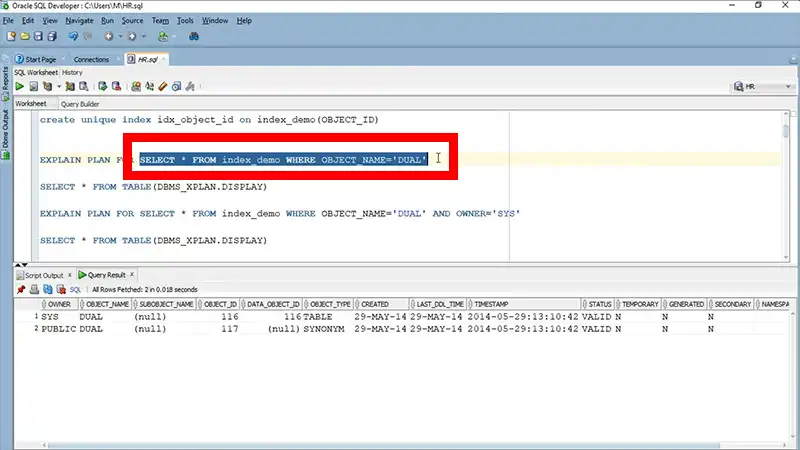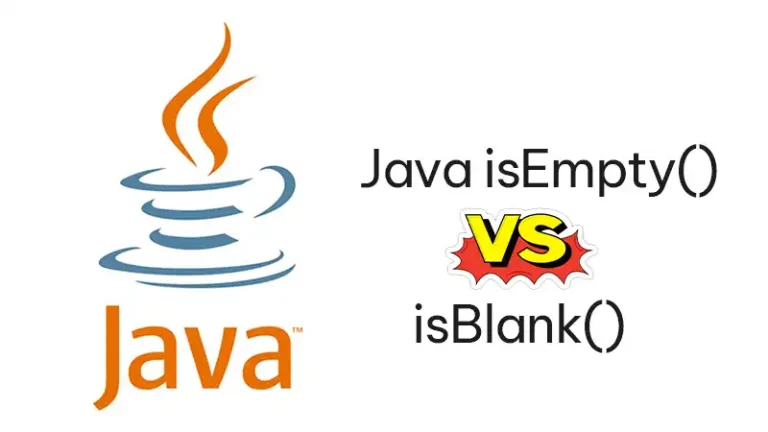Create Unique Index Oracle | Techniques to Follow
Hey there, fellow data enthusiasts! Today we’re talking about unique indexes in oracle. In Oracle, indexes are structures associated with tables or clusters that speed up the retrieval of rows. Indexes store the values of certain columns and the location of the data in the table, making data fetching a breeze.
A unique index in Oracle is a database index that ensures all values in a column or a combination of columns are distinct. This helps in maintaining data integrity by preventing duplicate entries in the specified columns. If someone tries to enter with a name that’s already taken, Oracle puts up the stop sign.
In the following sections, we’ll walking through the steps to create these unique indexes and discuss some pro tips to keep your database running smoothly.

The Importance of Unique Indexes in Database Management
You’ve probably heard about the role of unique indexes in databases, Let’s unpack why they’re the unsung heroes in the digital storage space.
Ensuring Data Integrity with Unique Indexes
Data integrity is the beating heart of any reliable database. It’s what makes the difference between data you can trust and… well, a mess. These indexes prevent the chaos of duplicate entries. Unique indexes tell your database, “Hey, each piece of data is special; let’s keep it that way!” And like magic, your data integrity is rock-solid.
The Role of Unique Indexes in Performance Optimization
Unique indexes aren’t just sticklers for uniqueness; they’re also performance powerhouses. When you query a database, you want answers fast, like lightning-fast. Unique indexes speed up the search process by telling the database, “I’ve already checked for duplicates, so we can skip that step.”
This cuts down the time your database spends sifting through data, delivering you the results at top speed. And it’s not just about speed; it’s about efficiency too. By streamlining the search process, unique indexes reduce the workload on your database, allowing it to handle more queries without breaking a sweat.
Creating a Unique Index: A Step-by-Step Guide
Well, unique indexes are your treasure map. Here’s a no-fuss guide to creating a unique index in Oracle that will turn your data retrieval process from a slog to a sprint.
Prerequisites for Index Creation
Before we roll up our sleeves and get to the nitty-gritty of index creation, let’s ensure our toolkit is ready. First off, you need the right privileges. Think of it as having the key to the database kingdom. You’ll need either the `CREATE INDEX` or `ALTER` privilege on the table in question.
Also, it’s crucial to have a clear game plan for what the index will achieve—this isn’t a “build it and they will come” scenario. Have a solid understanding of your data and how it’s accessed. Your future self—and your database’s performance—will thank you.
Syntax Breakdown: The CREATE UNIQUE INDEX Oracle Command
Now, let’s decode the incantation that is the `CREATE UNIQUE INDEX` command. It’s not as intimidating as it sounds. Here’s your basic syntax spell:
Figure 01: Command for creating unique index Oracle
This little line of code is like a magic wand for your database. With it, you’re declaring “Let there be a unique index!” and specifying exactly where and how it should appear. Just replace `index_name` with your chosen name for the index, `table_name` with the name of the table, and `column1, column2, …` with the columns you want to include.
Best Practices for Unique Index Creation in Oracle
As with any craft, there’s an art to creating unique indexes that stand the test of time (and data volumes). First, pick your columns wisely. You want to index columns that will be used in queries looking for unique records.
And then, there’s the decision between a single-column and composite unique index. If your uniqueness is defined by a single column, go for the single-column index. But if it’s a combination of columns, like both a first name and last name, you’ll want a composite unique index.
By following these guidelines, you’re setting up your database for a seamless performance, ensuring that your data remains as unique as a fingerprint and as organized as a well-kept library.
Advanced Techniques: Using Unique Indexes Effectively
Let’s explore how unique indexes they can be strategically employed in index-organized tables to optimize performance and data integrity.
Index-Organized Tables and Unique Indexes
These aren’t your garden-variety tables; they store data in a way that’s inherently ordered, based on a primary key. Think of IOTs as the high-achievers of the database world—they’re all about efficiency and performance. Now, when you throw unique indexes into the mix, you’re basically giving these tables a double espresso shot.
The unique index on an IOT ensures that all entries are as unique as snowflakes, and because the table’s already in order, data retrieval is like finding your favorite cereal in the grocery store aisle—it’s exactly where you expect it to be.
The Interplay Between Unique Indexes and Constraints
Moving on to the dynamic duo: unique indexes and constraints. Constraints are the rules that keep the data in line—no funny business allowed. And unique constraints? They’re like the bouncers of a club, ensuring no duplicate data tries to sneak in.
When you set a unique constraint, Oracle automatically creates a unique index to enforce it. It’s a behind-the-scenes deal, but the effects are front and center. This partnership means cleaner data, better integrity, and queries so fast they’d get a speeding ticket if they were on the highway.
Oracle and Unique Indexes: Tips and Tricks
Navigating the world of Oracle databases can be akin to an art form, especially when it comes to the finesse of unique indexes. Let’s unlock some savvy tips and lesser-known features that could be game-changers.
Oracle-Specific Considerations for Index Creation
When it comes to Oracle, creating unique indexes isn’t just a ‘click-and-go’—it’s a thoughtful process. You need to weigh in on a few Oracle-specific factors like tablespace selection and index compression. Choosing the right tablespace can be a balancing act between performance and storage.
Also, consider index compression for a leaner structure, especially if you’re dealing with repeating values. It’s like zip-packing your suitcase to make the most of the space. And remember, in Oracle, the way you set up your index can affect how your queries fly—or don’t.
Hidden Features of Oracle Unique Indexes You Should Know
Oracle’s unique indexes have a few tricks up their sleeve. For starters, they can be exceptionally useful for deferring constraint checking until the end of a transaction. It’s a bit like having a grace period where Oracle holds off on enforcing the rules until you’ve got all your ducks in a row.
This can be particularly handy when you’re juggling batch operations that may temporarily violate constraints. Plus, there’s the ability to include non-key columns in a unique index, which can give your queries a stealthy efficiency boost.
By tapping into these insights, you’ll be wielding Oracle unique indexes like a seasoned pro, making sure your database operations are as smooth and efficient as a top-tier concierge service.
Future-Proofing: Unique Indexes and Oracle Updates
Keeping up with the times is crucial, especially in the fast-evolving landscape of Oracle databases. Let’s get a grip on the latest updates and how you can brace your database for the future, ensuring your unique indexes don’t just survive but thrive.
What’s New in Oracle for Unique Indexes
Oracle’s constantly on the move, rolling out nifty features and improvements that can take your unique indexes to the next level. Imagine your indexes getting a turbo boost with each update—more efficient, more robust, and even smarter.
Recent updates have focused on enhancing the automation of index monitoring and management, making sure your database performance remains top-notch without you having to micromanage every detail. It’s like your indexes are getting their own AI assistant, keeping things running smoothly while you focus on the big picture.
Preparing Your Database for Future Oracle Releases
Preparing for future Oracle releases is like prepping for a big storm—it’s all about reinforcing the foundations. Start by keeping your system clean: regular health checks and cleanups are your best friends. Also, stay in the loop with Oracle’s roadmap.
It’s like checking the weather forecast; you’ll know what to expect and how to plan. And don’t forget to test drive the updates in a sandbox environment before going live. You wouldn’t buy a car without a test run, right? Same goes for Oracle updates—make sure they fit like a glove before you bring them into your live environment.
Frequently Asked Questions
1. Can I Add a Unique Index to an Existing Table With Duplicate Values?
No, adding a unique index to a table with existing duplicate values will result in an error. You must first resolve all duplicate values before creating the index.
2. How Can I Drop a Unique Index in Oracle?
To drop a unique index, use the DROP INDEX command followed by the index name, e.g., DROP INDEX idx_name;
3. Are There Any Limitations to the Number of Unique Indexes I Can Create?
While Oracle does not impose a strict limit on the number of unique indexes, practical limitations are based on system resources and performance considerations.
Conclusion
In the end, unique indexes are more than just database tools—they’re the keys to data integrity and performance. By keeping up with Oracle’s latest features and preparing for future updates, you ensure your databases remain robust and efficient. Embrace these strategies, and your unique indexes will continue to serve as invaluable assets in your data management toolkit.

![Why Cache Memory Is Faster? [Explained and Compared]](https://www.iheavy.com/wp-content/uploads/2024/08/Why-Cache-Memory-Is-Faster-768x432.webp)




